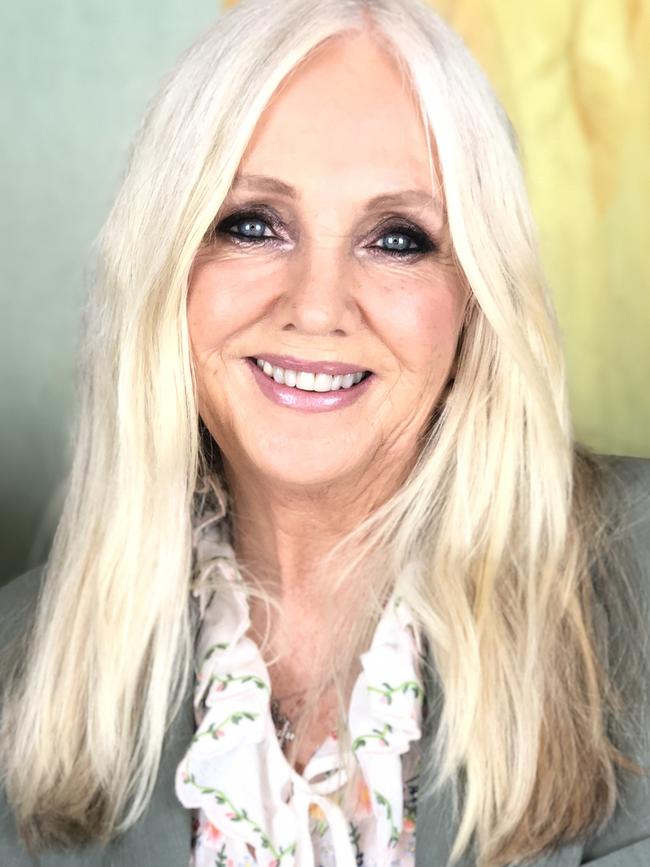Can we think our way to the perfect life?
Generation Z is the latest group to embrace the idea that we can achieve our dreams through positive thought. Is manifestation science wrapped in spiritualism, or a scam?

I was 17 when I first tried manifesting. I stole a cassette tape recording of a live talk by spiritual guru Wayne Dyer from my sister’s car and decided to populate my wardrobe door with a vision board. I was attempting, as Dyer would say, to connect with the abundance of the universe.
It was 2002, four years before cult film (and book) The Secret convinced the world – via cheesy stock image montages of people watching sunsets from superyachts – that thinking hard enough could make one’s wildest dreams come true.
I was clearly ahead of my time.
“Our thoughts create our reality,” Dyer preached as I dutifully traced three numerals on card and glued it to the cupboard.
It was the (very modest) mark I decided to aim for in my Higher School Certificate. There was no harm in giving it a crack, I decided, despite my slight scepticism.
In hindsight, I should have picked a higher number (and spent more time studying) because I manifested that exact figure.
It’s hardly a perfect science, though. I had also glued a fake cheque on there for $300,000, which 20 years on is still yet to materialise, as is the superyacht.
Over the following two decades my feelings about this spiritual concept has swayed, pendulum-like, more recently settling at the hazy juncture between spirituality and science.
That’s kind of where the practice of manifestation lies right now. It has advanced beyond twee quotes and mail-order CD programs into more serious, neuroscience inspired territory, perhaps as a way for us to figure out why some seemingly unremarkable people have the Midas touch, while others – even those with huge talent and potential – appear stuck in a purgatory of mediocrity.
In the years following The Secret’s release, manifestation and the law of attraction have become new age phenomena.


TikTok videos with the hashtag #manifestation have clocked up more than 27 billion combined views, with users posting the results of their attempts to attract everything from emergency cash to their perfect mate in record time.
One of these spin-offs involves TikTokers claiming they have “lucky girl syndrome”, whereby they attract opportunities and windfalls by believing they are luckier than most.
While this may seem absurd, it is hard to argue against the idea that our thoughts manifest our reality, even if it is scented with sandalwood and presented on a batik print meditation pillow.
That’s how this story came to be. I saw an ad promoting an Australian speaking tour with US spiritual teacher Gabrielle Bernstein and thought I would like to interview her for a story.
I then had another thought: why don’t I reach out to her publicity team and request one? These thoughts inspired my actions, and here we are.
It begs the question: are new age sages just repackaging cognitive behavioural therapy and delivering it to the metaphysically inclined in a more digestible format?
CBT has been adopted by psychologists and mental health practitioners as an effective treatment option for cognitive disorders such as anxiety, depression and phobias. The therapy aims to challenge a person’s negative self-talk and create a more positive set of core beliefs, a set of deeply held assumptions that guide our actions and behaviours.
“Manifestation is really (the idea that) we attract what we believe,” Bernstein tells me from her country home in upstate New York.
“As we start to adjust our belief systems through the power of spiritual practice and personal growth and development, the more we can really release any blocks to our ability to manifest and attract what we want.”
At a superficial level, Bernstein’s teachings can seem “woo-woo” but the 43-year-old certainly hasn’t become a best-selling author nine times over, overcome addiction and garnered the support of Oprah Winfrey, Deepak Chopra and, before his death, Dyer by sitting on her couch and wishing for it.
While psychologists collectively back the idea that changing our thoughts can have a profound impact on our life (for better or worse), few, if any, are willing to concede there is any scientific basis to manifestation.
Comparing CBT with manifestation is, according to Peter Norton, like comparing weight loss pills with a long-term exercise and diet overhaul.
The Cairnmillar Institute’s associate head of school (research) prefaces our interview with the disclaimer that he would not “be talking in support of manifestation”. “There is no scientific or rational basis behind it,” he says.
“For the people who are going around publishing books and peddling this … these kinds of things strike a chord among the thousands of people in the audience or the millions of people buying the books simply because as humans we choose the path of least resistance – the easiest option. That’s why the concept of a diet pill, the ‘oh geez I can pop a pill and lose all this weight’ as opposed to going out, exercising, and watching your diet … we gravitate towards that.
“Because do I really want to spend 30 minutes or an hour at the gym? Or do I just want to pop a pill and not have to change my diet?”
In her book Super Attractor: Methods for Manifesting a Life Beyond Your Wildest Dreams, Bernstein details the steps she advises to attract our desires.
These include a “Choose Again” method, which requires noticing and forgiving negative thoughts, replacing them with better-feeling ones and reciting the following prayer: “Thank you, Universe, for guiding my thoughts toward good-feeling emotions.”
“Low-vibe thoughts become addictive,” Bernstein explains in the book, “and as with any addiction, we need to interrupt the pattern to heal it.”
Prayer, another core manifestation tool in Bernstein’s teachings, has been shown in numerous studies to correlate with reductions in depressive symptoms and improved feelings of wellbeing. While her teachings are now more spiritual than religious in nature, it was leading workshops at her local Jewish temple in her teens that Bernstein discovered her calling.

“I would lead these spiritual weekends at the temple with hundreds of Jewish teenagers and that’s when I was kind of like ‘oh, there’s something about Judaism, not even just Judaism but about spirituality and connecting, that is really turning me on and really getting me lit up.”
A quick scroll through TikTok or Amazon’s self-help book offerings will uncover thousands of get rich/healthy/happy-quick schemes, and Bernstein’s punchy book titles, such as The Universe Has Your Back and Miracles Now also imply a magic-pill type solution to our problems.
But within their pages you’ll discover that according to Bernstein – whose former life as a successful publicist no doubt taught her the importance of good marketing and a snappy headline – manifestation is a lifelong, often difficult, process of inner reflection, trauma processing and reframing beliefs.
“The most important book I’ve written to date is called Happy Days, and the subtitle (reads) Transforming Traumas from Your Past So You Can Become Free in the Present,” she says.
“It’s a really important journey that I would invite anyone to be brave enough to go on because we do have the ability to let our inner world dictate our life experience, but that doesn’t come without commitment, practice and the courage to look inward.”
The idea that nothing will come into a person’s life without commitment is one that Norton does share with Bernstein. “As Wayne Gretzky, the hockey player, said once, you miss 100 per cent of the shots you don’t take, so you’ve got to take the shots,” Norton says.
“If you really want to find a partner, you’ve got to get on the apps or join the social groups or whatever works for you, but sitting in your flat wanting and expecting Prince Charming is going to knock on your door, you’re going to be waiting a very long time.”

